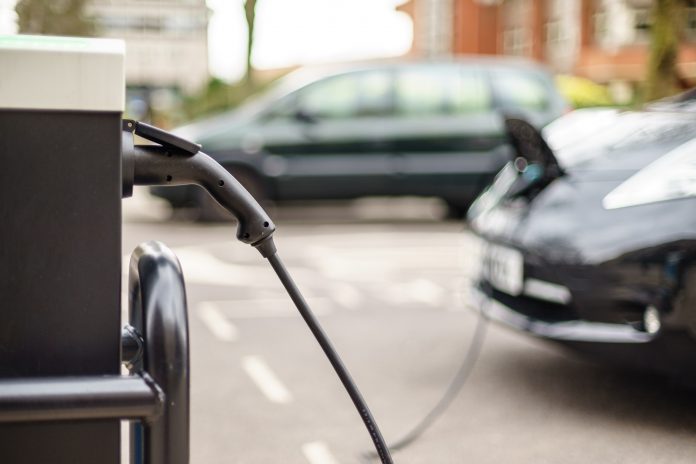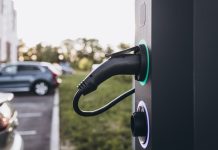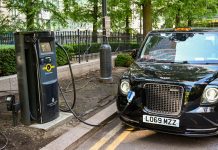Menno Kardolus, Heliox Group CTO, discusses how rapid charging can be implemented at scale, and why fleet managers should be looking to this technology to underpin their e-mobility plans for the future
The discussions around the future of mobility are not new in the industry. For years, companies have been dedicated to bringing innovations to both business customers and consumers to ensure consistent development and improvement are front of mind for all. While the idea of the future of mobility previously looked like something much more futuristic, the reality is that this vision is now highly achievable, and is already on its way. Ambitions of self-driving, autonomous vehicles run in parallel with ambitious emission reduction and climate change goals. It’s important to take a step back and focus on how electric vehicles can further align with this.
The enthusiasm for the future of e-mobility is encouraging. We are seeing a strong increase in the number of cities wanting to move towards electric vehicles for public transport across the UK & Europe, as well as companies wanting to electrify their fleets. The recent announcement from leading UK businesses such as BP, BT and Royal Mail committing to fully electrify their van fleets by 2030 is hugely encouraging and will support long-term goals to achieving a zero-emissions future. In addition, Waitrose’s latest partnership with Shell, committing to build hundreds of charging points for electric cars in store car parks by 2025 is a brilliant step for bringing the future of e-mobility to consumers. By 2025, there are expected to be 800 charging stations at up to 100 Waitrose stores across the UK, enabling customers with electric vehicles to have a seamless charging experience while they shop. We are certainly past the point where e-mobility is seen as a fad. It’s here to stay.
As we move beyond the solely business interest in electric, this demand must be accompanied by the relevant and necessary charging infrastructure. The implementation of this infrastructure is critical to support the shift to electric, in particular while the industry continues to compete with non-renewable, more “traditional” sources. The benefits such as speed, efficiency and minimal downtime are key factors in ensuring electric is the clear frontrunner. Solutions needed to support this development must be deployed correctly, as the idea alone is not enough. City planners and local governments looking to introduce electric vehicles must also ensure they are deploying the correct rapid charging infrastructure to make these implementations a success.
On a more technical level, rapid charging infrastructure is built on Direct Current power, which supports renewable sources such as solar. While Alternating Current power is currently the market leader due to its affordability, the strength of DC power is key to maintain optimum power across a grid of any size.
City planners
Deploying rapid charging at scale requires time-efficient solutions, and a combination of a number of charging methods, depending on the task in hand. By 2040, the UK will need an additional 3 million charging points across the country. The deployment of this level of infrastructure requires collaboration to allow chargers to be seamlessly installed without causing disruption to a city’s day-to-day activity, while also being placed in a non-obstructive place and close to the charging location, ensuring minimal impact on views. While this process sounds complicated, this provides an important solution to fleet managers looking to upgrade their fleets and be part of the future of e-mobility. As fleet managers and city planners look to revolutionise their cities, e-mobility will be a crucial part of their conversations and visions.
City planners understand the benefits of e-mobility, such as e-buses and e-trucks that will transform how both people and goods are transported around the city, while also supporting environmental goals. They know that future cities will be focussed on smart technology, efficient investments that improve quality of life for business owners and residents, and e-mobility that revolutionises how the city operates. Currently, city planners are wanting to implement their visions for e-mobility, but in order to ensure these visions become reality they must look to rapid charging to ensure they can deploy at scale to achieve maximum success and impact in a timely way. It’s important to note that by 2030, the UK is expected to be the second highest ‘owner’ of chargepoints in broader EU. Its electric bus fleet is set to be the largest in Europe by 2024, demonstrating the necessity for city planners to be prepared to implement this technology. In order to effectively plan for this growth in the cities they work within, city planners must be looking to smart, rapid charging solutions to support the e-mobility infrastructure they intend to deploy.
While rapid charging is crucial to the implementation of e-fleets and e-vehicles, there also comes a question of how the energy used to charge these vehicles is effectively managed. When it comes to energy management, the key element is to avoid putting additional stress on the grid. Smart energy management could revolutionise solutions to the issue of grid stress, by activating charging capabilities that optimise the grid at peak times, and putting energy back onto the grid when it has not been used and is needed elsewhere. Electrification, as we know, puts pressure on the grid, particularly during peak hours. Therefore, while implementing charging infrastructure it’s important to consider the bigger picture, and consider how best to manage this grid pressure. A practical solution is Vehicle-to-grid (V2G) technology, a component of larger smart charging software, which will see the car effectively putting energy back into the grid. However, for this to be useful and to be considered “smart”, new technology must be developed and appropriately deployed at scale.
The need for a bi-directionality function as well as Vehicle-to-grid (V2G) to be built into chargers to support this is increasing as city planners focus on the energy transition, ensuring that resources are preserved and used optimally. The practicalities of this can be demonstrated by Octopus Energy’s partnership with Nissan, which allows customers to recharge their car in off-peak hours when electricity is at its lowest price, and sell the same energy back to the grid when prices are higher as well as Ovo Energy’s latest V2G trial. If city planners can effectively deploy smart energy management solutions it can enable the next generation of decentralised energy, not just for improving balance across the grid, but to activate new revenue streams for EV owners.
Based on the three trends discussed, e-mobility, smart energy management and rapid charging, these will be key to enabling smart cities to grow and develop. The time to make the changes necessary is now. The immediate future of e-mobility will be built on rapid charging, while smart charging and V2G technology will ensure these solutions are sustainable. E-mobility is the key to driving forward success as it becomes the backbone of city planning bridging both energy and electric vehicles, and having the solutions necessary to support new infrastructure will be crucial to bringing these visions to life.











